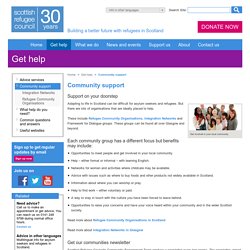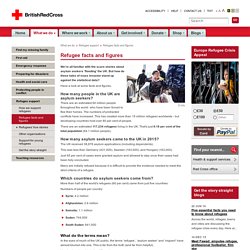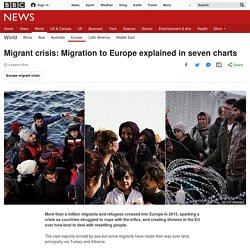

National Geographic Out of Eden Walk. Scottish Refugee Council. Frequently asked questions - refugees in Scotland. Please take a look at our dedicated page 'I am a woman' for refugee and asylum seeking women.

If you want to meet other women living in the Glasgow area and make new friends, you can join a women’s group. Some of the groups you may wish to consider are detailed below. Unity Women’s Drop In This group offers friendly and practical support in a comfortable women-only space. The Unity Women's Project drop-in runs from Monday from 12 noon to 5pm on Mondays. Read their blog to find out more about their project You can also find out more about their drop-in on the Unity website or call 0141 427 7992. Mother Theresa Albanian and Women Across the World Group The group is open to all women and children are also welcome; a crèche is provided.
Contact the Maryhill Integration Network (including Central and West Integration Network) for more information on 0141 946 9106. Karibu Karibu is an organisation offering advice, support and information to African women. Women’s community groups Close FAQ. Refugee organisations in Scotland. Support on your doorstep.

Advice services for asylum seeker and refugee in Scotland. Independent advocacy is at the heart of our services for refugees and people in the asylum process.

Our current services include: Refugee Integration Service Our caseworkers in the Refugee Integration Service work with new refugees and family members of refugees reunited in Scotland to assist them in integrating into the country. We assist people granted Refugee Status, Humanitarian Protection, or Discretionary Leave to Remain to learn about and access their rights and entitlements. Our caseworkers provide advice and assistance in a range of areas, including housing, welfare rights, and employability as well as encourage people to actively participate in their communities and wider society. Family Key Work Service. World leaders are spectacularly failing refugees. 04 Oct 2016, 01:49pm This Afghan family have been living in the old airport of Elliniko, Athens for five months.

Golroz (right) is six month pregnant © Giorgos Moutafis/Amnesty International Refugees are people who have had to flee their country because of war or persecution. They cannot return to their own country because their own government cannot or will not protect them, they are forced to leave their homes and seek international protection. Just over 21 million people – or 0.3% of the world’s population – are refugees right now.
Powerful media and politicians are manipulating reality and dehumanising them, portraying refugees as illegal, faceless invaders who threaten our security. ‘If I were to wish for something, it would be a job, independence, and to be with our loved ones. The world’s wealthiest nations host the fewest refugees. GA CPDImmigrationFlowchart. Refugee facts and figures. We’re all familiar with the scare stories about asylum seekers ‘flooding’ the UK.

But how do these tales of mass invasion stand up against the statistical data? Have a look at some facts and figures. How many people in the UK are asylum seekers? There are an estimated 60 million people throughout the world who have been forced to flee their homes. The numbers of protracted conflicts have increased. There are an estimated 117,234 refugees living in the UK. How many asylum seekers came to the UK in 2015?
The UK received 38,878 asylum applications (including dependents). This was less than Germany (431,000), Sweden (163,000), and Hungary (163,000). Refugee & Asylum Policy. Statistics. EU migration: Crisis in graphics. Image copyright Getty Images More than a million migrants and refugees crossed into Europe in 2015, sparking a crisis as countries struggled to cope with the influx, and creating division in the EU over how best to deal with resettling people.

The vast majority arrived by sea but some migrants have made their way over land, principally via Turkey and Albania. Winter has not stemmed the flow of people - with 135,711 people reaching Europe by sea since the start of 2016, according to the UNHCR. 1. Which countries are migrants from? The conflict in Syria continues to be by far the biggest driver of migration. 2. Although not all of those arriving in Europe choose to claim asylum, many do. But far more people have arrived in the country - German officials said more than a million had been counted in Germany's "EASY" system for counting and distributing people before they make asylum claims. 3. This compares with 280,000 arrivals by land and sea for the whole of 2014. 4. 5.
Syrian refugee crisis: why has it become so bad? The Syrian war has been going on for four years, but only in 2015 has Europe woken up to the flow of Syrian refugees.

It is hard to find definitive reasons, but conversations with Syrians across the migration trail and a survey of recently available data suggest a mixture of the following. Firstly, the war is not getting any better. That has the dual effect of prompting more Syrians to leave their country and causing Syrians in exile in Turkey to give up hope of returning home. Secondly, Turkey is not a country for people to stay in for the long term. It has been more receptive than most, taking in about 2 million Syrian refugees. Thirdly, UN bodies working with millions of refugees in Jordan, Turkey and Lebanon are complaining that they are running out of money, making camp conditions harsher than in the past and life more untenable for Syrians who live on their own but still depend on UN subsidies.
The UNHCR reports that its appeals for cash are underfunded. Research.